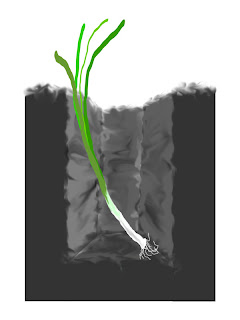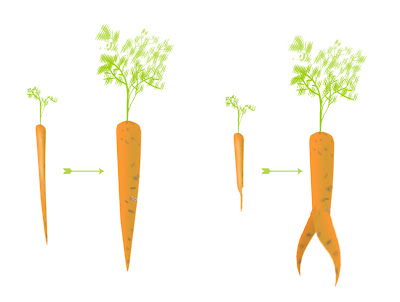A few days ago a local ‘community interest company’ planted hedgerow saplings obtained from The Woodland Trust, in my local park, Fog Lane.
I’m not going to name the group because I am going to launch into a rant in this post, and it’s not the people themselves I have reservations about but the principle of their actions.
The reason I am feeling twitchy about this is that although planting shrubs and trees is generally a good thing (let’s hope they haven’t been imported)
I’m not sure a small interest group should be allowed to plant anything in a public park.
On its website the group states its aim as providing “practical solutions to help people reduce their food carbon footprints.” Putting aside my other reservation (I have so many reservations) on the use of carbon as a way to explain climate change to the general public (i.e. do you know what a ‘food carbon footprint’ is?) I have doubts that community orchards and vegetable gardens are a realistic way to reduce food waste and decrease the reliance on large supermarkets, particularly in a city as densely populated as Manchester. They have educational benefits but are not the solution.
I am a Guardian reading, Green Party voting, Archaeology graduate and thus can’t help being concerned with global warming, globalisation, and capitalist greed. Yet, it seems to me this new interest in encouraging people to plant vegetables and apple trees is simply a fashion. To be involved with such projects must create virtuous feelings derived from helping other people and being close to nature. Sticking two fingers up to corporate Tesco in any small way is to be encouraged, and it is good to see young people thinking about self-sufficiency and the place of the individual in an increasingly homogenous and business-led world.
BUT the majority of people have no inclination, time or money to pick aphids off tomato plants or apples off trees. So at this moment in time planting hazelnut bushes remains a minority issue.
This is where I get back to my point –
should minority interest groups, however well meaning, be allowed to change the contents of a public park?
If this was to be openly accepted then why couldn’t groups concerned with the mental health of the public be allowed to plant areas suitable for meditation? The design of these is generally based on oriental style gardens and involves meandering paths, bamboo, water features and herbs. Already we can see a difference in planting style from those who put their faith in a more naturalistic scheme of tree and native shrubs, and yet the motivation for each is equally worthy.
Fog Lane Park serves a fairly diverse community. On one side is affluent Didsbury and on the other the less well off Burnage. Guess where our ‘community interest company’ is based? During the day it is filled with dog walkers. At the weekends it gets busier with children in the play area and football players on the fields. By night it is haunted by drunk youths escaping their drunk parents. You could say it is a normal urban park. How many of those users have a burning desire to pick hazelnuts to roast or sloe berries to enhance their gin? This is what the group who planted the shrubs said we would be able to do in a few years time. I doubt there are many residents who would recognise a sloe even if it hit them in the eye.
If you genuinely, and powerfully, wanted to reduce the community’s ‘food carbon footprint’ wouldn’t the most practical action be to persuade the council to dig up the playing fields and plant potatoes?
What do most people eat? Apple and blackberry crumble? No, chips. And bread ... would a field of wheat be viable in Manchester?
The role of the council in this is also interesting. Why did they allow their land to be planted with someone else’s shrubs? The first answer is, of course, because they were free and they didn’t have to pay anyone to plant them. A win win situation.
A local paper reporting on the event had a quote by a councillor, “the new trees will not only look great but increase the bio-diversity of the park.” Biodiversity – the new buzz word for governments. There is a directive on local councils from the government, the EU and the UN to increase the biodiversity in their areas. Manchester has lots of plans and does seem to be dealing with this. In fact I’m the happy recipient of some of its initiatives.
BUT when laws and directives and committee meetings get involved the likelihood of ‘tick boxing’ exercises increases. This is perhaps why our small youthful interest group were allowed to plant those hazelnuts. It facilitates the ticking of a number of boxes such as biodiversity and community engagement. Job done.
BUT isn’t this the type of working that allows the opening of chain shops where they are not wanted. If a large company says it can provide jobs and tax revenue a local planning office has few reasons to prevent the company from opening. Boxes have been ticked but there are no boxes for ‘maintaining local uniqueness’. I think it’s a matter of management. A small town or individual community doesn’t have someone with overall responsibility for its management. Planning applications are dealt with by remote departments with directives to meet. Likewise Fog Lane Park doesn’t have a manager (warden) with the power to say ‘is this of benefit to the local people?’
One other point – if anything needs to be improved in this park it is the facilities for the poor ducks. Their pond is a disgrace. But of course its occupants are mallards and Canada geese. These are not on anyone’s ‘must save’ list so money has not been put aside to clean the water or provide bins for discarded bread wrappers. And yet, I suggest
a greater number of local people derive pleasure from feeding the ducks than they do from foraging blackberries.
Who and what should a local park serve?








































